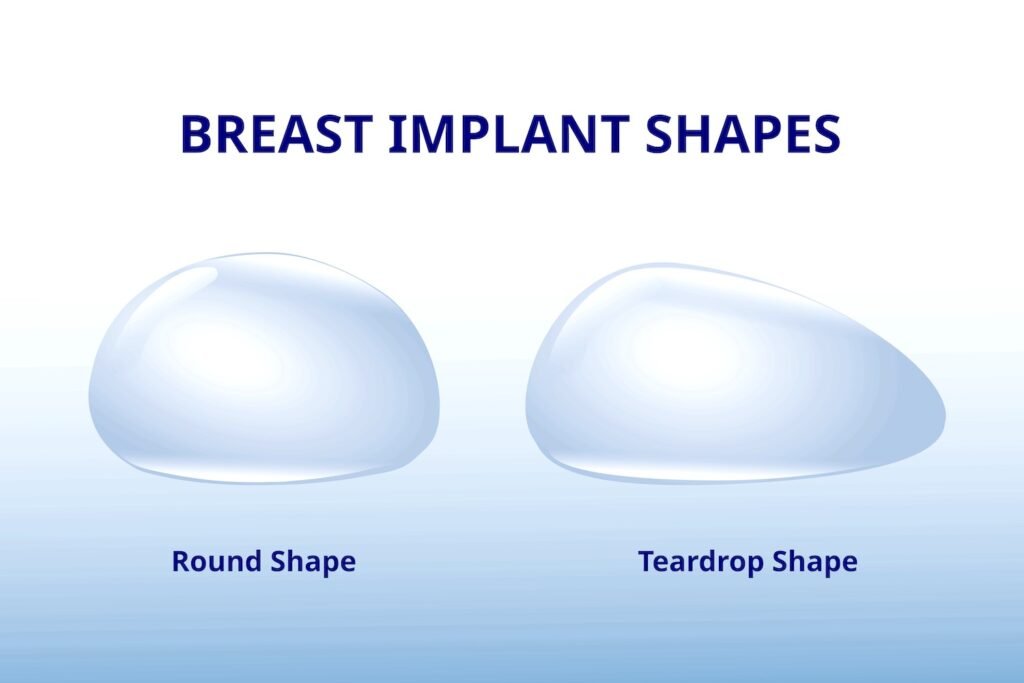- About
- Face & Skin
- Cellulite treatment
- Excessive sweating in women and men
- Facial and skin treatments
- Facial Surgery
- Hydrafacial treatment
- IV drips (vitamin infusions)
- Laser treatment
- Lip Lift
- Mesotherapy (skin structure )
- Special Offers by TREMP PLASTIC SURGERY
- Treatments with Skin Ceuticals
- Wrinkle and facial treatments with botulinum
- Wrinkle and facial treatments with filler
- Face
- Breast
- Body
- Offers
- Blog
- Contact
- EN
- DE
A full chest and beautiful décolleté is something every woman wants and is a symbol of femininity. Unfortunately, many women suffer from too small breasts. Affected women often have the desire to enlarge the too small breasts. A natural breast augmentation with implants and/or autologous fat can help a woman to gain more self-confidence and femininity.


What are the causes of a breast that is too small?
The most common reasons for a “small breast” are genetic. Often, however, there are also malformations of the breast, which appear at an early age (so-called “trunk breast” or “tube breast”).
Many women suffer from a too small or too saggy bust especially after pregnancy or after heavy weight loss. At the same time, the shape and volume of a woman’s breasts change with age.
How is breast augmentation performed and how long is the scar?
The implant is inserted either under or over the muscle through a small incision in the underbust crease. Breast augmentation can also be performed via the vestibule above the armpit (so-called endoscopically). This varies from person to person and can be performed according to preference and possibility. The scar will be 2-3 cm long, depending on the size of the implant. An alternative is breast augmentation with autologous fat.
The goal of the surgical procedure is a natural breast shape. The extent of the breast augmentation is adapted to the anatomical conditions. Depending on the patient’s wishes and breast shape, a teardrop-shaped implant, a round implant or a so-called “ergonomic” implant can be inserted. An ergonomic implant is a round implant, but moves naturally with your body. This creates the most natural look and feel possible.
The procedure can be combined with autologous fat for shape improvement, symmetrization in asymmetrical breasts and for a tighter décolleté. The fat is often taken from the abdomen or inner thighs and is also possible in slender patients. After the operation, push up bras should be worn again after six weeks at the earliest.
Round or teardrop-shaped implants?

Teardrop implants may be recommended in the following situations:
- Define, refine and improve the shape of the breast
- At the proboscis breast/tubular breast (short lower pole).
- Slim patients with minimal breast tissue
- Desire for natural inclination of the upper pole
- Asymmetry of the breast
- Desire: full lower pole
- Slightly sagging chest
- Less “rippling” (“implant wrinkling”)
- With simultaneous breast lift
- Long stability of the implant
- Low risk: ALCL (anaplastic large cell lymphoma)
Round shaped implants can be recommended in the following situation:
- Poor soft tissue support and a lot of excess skin
- Very athletic patients
- Desire for plump upper pole
- Higher BMI (BMI > 25kg/m2)
What is the so-called “rapid 24-hour recovery breast augmentation” or “flash recovery” breast augmentation?
Rapid recovery breast augmentation, or flash recovery, is a method of post-operative care that reduces downtime and shortens overall recovery time through specific post-operative activities and medications.
The premise is simple: reduce postoperative chest swelling, stiffness, and pain with passive pectoralis muscle movement and anti-inflammatory agents.
Rapid recovery was originally tested by a surgeon in Texas, and it proved to be extremely successful. Most patients return to their usual routine, including work-outs, after just a few days.
Postoperative protocol for “Rapid 24-hour recovery breast augmentation”.
On the day of the operation
- When you get home from surgery, take a 2-hour nap.
- Have your nurse wake you up after 2 hours.
- Eat a small bite and take 1 pain tablet (Dafalgan or Voltaren). After that, you should take one pain tablet every 8 hours.
- After 15-20 minutes, take a shower, wash your hair, blow dry it and put on normal casual clothes.
- You and your caregiver should then go to lunch or a similar meal.
- Be sure to open your own nursing door and do all the normal activities. Just don’t do anything very strenuous.
- After lunch you will do the first series of five overhead stretches, we will instruct you.
- Stand with your hands at your sides.
- Raise your arms straight out to the side and then over your head so that the backs of your hands touch and your arms touch your ears.
- Do this at least 5 times per hour.
- Lie face down with your entire upper body weight on your chest for 15 minutes before bed. This is best done over a footstool or similar piece of furniture, but also lying in bed (this can be a bit uncomfortable, but just relax and the pain should slowly subside).
- Repeat this every night before going to bed.
- Take one or two pain pills (Dafalgan and/or Voltaren) before bed if you have more severe pain.
1 day after surgery
After waking, eat a small meal and take a pain pill (Dafalgan and/or Voltaren).
Shower, wash your hair, blow dry it, get dressed and go about your normal routine.
Remember to do your stretches at least 5 times an hour.
Go about your day as usual, but avoid heavy work for the pectoral muscle, such as.
- Push-ups
- Bench Press
- Flying
- Move furniture
- Swimming
Before going to bed, lie face down on a footstool, similar piece of furniture, or your bed again for 15 minutes.
Go back to taking a pain pill (Dafalgan and/or Voltaren) if you feel you need it to get a good night’s sleep.
Two days after surgery
Do everything today as you did yesterday. Remember your exercises and the pain pill.
Three days after surgery:
- Today, everything remains the same.
- Tonight is the last night you have to lie face down.
- If at any time you feel that you are too uncomfortable with Dafalgan or Voltaren alone, take 1 co-Dafalgan. However, you must not drive if you have taken either of these medicines.
- As soon as you feel comfortable, you can resume all activities, except for exercises that strain the pectoral muscle. When you run or do similar exercises, wear two sports bras or a high-impact sports bra.
- Remember to continue your arm stretches. You will know when to stop.
When can I swim after breast augmentation?
Most women can go back into the water about 3 weeks after surgery. After this waiting period, the skin tissue has had time to heal and become more water resistant. Also, be careful not to leave your wounds wet for an extended period of time after swimming. When you get out of the water, dry yourself off well and do not stay in your wet swimsuit top for too long.
Although many patients feel mentally “ready” to get back in the pool or ocean before 3 weeks are up, it is important that your body fully recovers. If your 3 weeks of recovery are not quite up yet this summer, you can still enjoy time with friends and family by just getting waist deep in the water.
How long do the implants last?
This varies from individual to individual. If capsular contracture occurs with displacement of the implant, they must be removed and can be replaced if necessary.
We use the most modern implants, which do not leak uncontrollably and the implants usually last very long. With our implants, the risk of capsular contracture after 10 years is minimal. For the implant, our manufacturer has a lifetime replacement policy in case of rupture or deflation. In case of capsular fibrosis (Baker III/IV), double capsule or seroma in advanced stage, a free product replacement is provided by the manufacturer.
What do I have to pay attention to before and after the operation?
If you are a smoker, then you must pause nicotine consumption 4 weeks before and after the procedure. Regular follow-ups are required after the procedure. A gel patch strip is left in place for 7 days. Then silicone gel scar therapy is initiated and continued for 3 – 6 months, followed by scar massages.
You will need to wear a compression bra consistently for 4 weeks, the bra can be removed for showering. Start aerobic exercises 2 weeks after surgery, non-breast resistance exercises after 4 weeks, and breast/sitting exercises after 6 weeks. Do not wear a “push-up” bra for 6 weeks.
Optimal breast augmentation thanks to 3D simulation?
If desired, a 3D simulation can be performed before the operation. This can determine the ideal shape and volume of the implants. Would you like to know how you might look after breast augmentation? Make an appointment with us, then we can simulate the different implant shapes and sizes during the consultation.
How long does the breast operation take?
The operation time varies individually, usually 60 – 90 minutes. The surgery is usually performed under general anesthesia.
Is the procedure performed on an outpatient basis or is an inpatient stay necessary?
The procedure is usually performed on an outpatient basis; an overnight stay in the clinic is possible if desired. Drains (“wound tubes”) are not usually inserted.
Did the scars of the breast augmentation remain visible?
The fine scars are hardly visible after one year and are hidden in the underbust fold. We recommend regular care of the scars with a greasy ointment or a silicone plaster.
What are the risks of breast augmentation?
The most common risk is the so-called capsular contracture, i.e. the painful formation of a capsule around the prosthesis which is accompanied by a deformation of the breast. The occurrence of capsular contracture after treatment varies from individual to individual; a hematoma or infection can promote capsular contracture. Other risks are disturbances in wound healing, bruising or infection.
Breast implant associated anaplastic large cell lymphoma (BIA-ALCL) has recently been the subject of increased discussion. There is a possible link between BIA-ALCL and the coating (so-called mactrotexturing) of breast implants.
Temporary hypersensitivity or numbness may occur after the operation. We recommend regular skin care rsp. firming cream after the treatment. For this we can recommend a specific breast cream after breast augmentation. The treatment of hypersensitivity or numbness can be supported by medication.
When does health insurance cover part of the surgery costs?
Breast augmentation is a cosmetic procedure and must be paid for by the patient. In the case of a capsular contracture, the health insurance usually covers the removal of the prosthesis and capsule.
Breast augmentation can give you the look you’ve always wanted. But what happens when complications occur such as infection, capsular fibrosis, implant displacement, implant damage or even the need for implant removal?
Often, the cost of correcting these problems is even higher than the original cost of the breast augmentation.
For patients with BreastService+ program, in certain cases we cover the cost of corrections after breast augmentation with implants.
July 18, 2024

